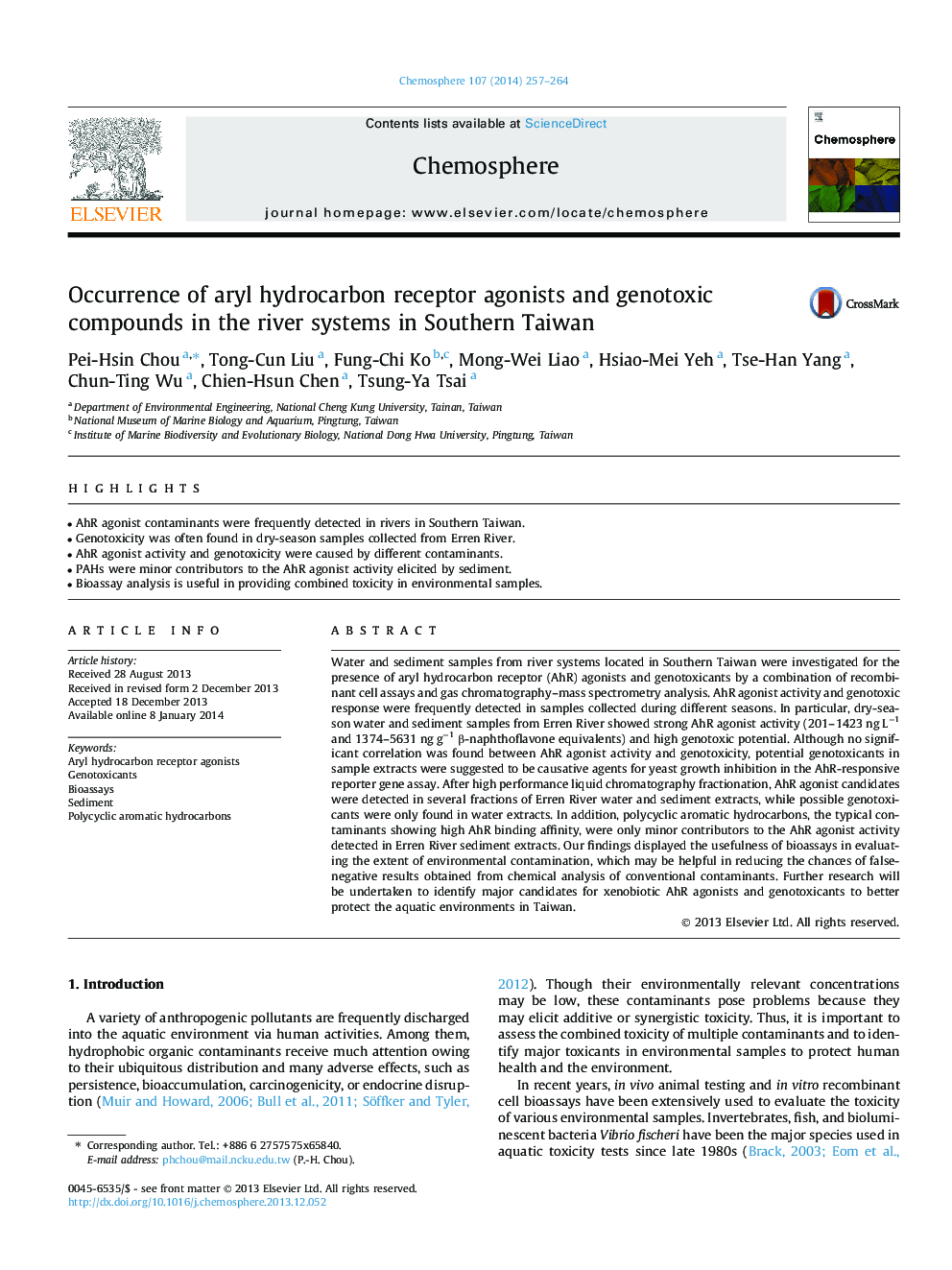| Article ID | Journal | Published Year | Pages | File Type |
|---|---|---|---|---|
| 6309148 | Chemosphere | 2014 | 8 Pages |
â¢AhR agonist contaminants were frequently detected in rivers in Southern Taiwan.â¢Genotoxicity was often found in dry-season samples collected from Erren River.â¢AhR agonist activity and genotoxicity were caused by different contaminants.â¢PAHs were minor contributors to the AhR agonist activity elicited by sediment.â¢Bioassay analysis is useful in providing combined toxicity in environmental samples.
Water and sediment samples from river systems located in Southern Taiwan were investigated for the presence of aryl hydrocarbon receptor (AhR) agonists and genotoxicants by a combination of recombinant cell assays and gas chromatography-mass spectrometry analysis. AhR agonist activity and genotoxic response were frequently detected in samples collected during different seasons. In particular, dry-season water and sediment samples from Erren River showed strong AhR agonist activity (201-1423 ng Lâ1 and 1374-5631 ng gâ1 β-naphthoflavone equivalents) and high genotoxic potential. Although no significant correlation was found between AhR agonist activity and genotoxicity, potential genotoxicants in sample extracts were suggested to be causative agents for yeast growth inhibition in the AhR-responsive reporter gene assay. After high performance liquid chromatography fractionation, AhR agonist candidates were detected in several fractions of Erren River water and sediment extracts, while possible genotoxicants were only found in water extracts. In addition, polycyclic aromatic hydrocarbons, the typical contaminants showing high AhR binding affinity, were only minor contributors to the AhR agonist activity detected in Erren River sediment extracts. Our findings displayed the usefulness of bioassays in evaluating the extent of environmental contamination, which may be helpful in reducing the chances of false-negative results obtained from chemical analysis of conventional contaminants. Further research will be undertaken to identify major candidates for xenobiotic AhR agonists and genotoxicants to better protect the aquatic environments in Taiwan.
